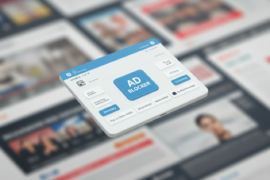This article may contain references to products or services from one or more of our advertisers or partners. We may receive compensation when you click on links to those products or services. Nonetheless, our opinions are our own.
- Key Highlights
- Introduction
- Understanding Permission-Based Email Marketing
- Preparing for Permission-Based Email Marketing
- Beginner’s Guide to Permission-Based Email Marketing
- Best Practices for Effective Permission-Based Emails
- Advanced Techniques in Permission-Based Email Marketing
- Measuring the Success of Your Email Campaigns
- Conclusion
-
Frequently Asked Questions
- What is the best time to send marketing emails?
- How often should I refresh my email list?
- What are the key benefits of permission-based email marketing compared to traditional email marketing methods?
- How can I effectively ask permission to send marketing emails to potential customers?
- What types of content should I include in permission-based emails to enhance engagement?
- How can I measure the success of my permission-based email marketing campaigns?
- Recommended Reads
Key Highlights
- Permission-based email marketing means you must get explicit agreement from potential customers before sending them marketing messages.
- This method helps reduce spam complaints. It builds trust because it focuses on getting express permission.
- Following anti-spam laws, such as the CAN-SPAM Act in the U.S., helps you stay compliant and protect your brand’s reputation.
- Using landing pages and email automation makes it easier for people to sign up, engage, and manage email lists.
- Personalizing email content and checking analytics can significantly improve engagement with your subscribers.
- More advanced methods, such as audience segmentation and social media integration, help increase conversions and enhance overall results.
Introduction
The key to a good email marketing strategy is trust and respect. Permission-based email marketing means you get permission from people before sending them your marketing messages. This approach is about being open and honest. It also reduces unwanted emails, which often lead to spam complaints. With today’s tools and laws, permission-based email marketing helps brands connect better with their audience while following the rules. Are you ready to learn how to build trust and boost conversions using respectful email tactics? Keep reading for a complete guide.
Understanding Permission-Based Email Marketing
Sending emails to people who want them may seem simple. However, permission-based email marketing is more than that. It shows you are professional, and when people receive these emails, they feel good about them. This method is different from more aggressive approaches.
When done right, permission-based email marketing can create stronger connections and lead to better results. But what does this mean? Why is it essential to build trust and loyalty with customers? Let’s look into what it means and why it is necessary.
Definition and Importance of Permission-Based Email Marketing
Permission-based email marketing is known as opt-in marketing. This means you reach out to people who want your promotional emails. They agree by filling out a form or giving written consent. This method helps respect personal space and stops unsolicited email.
Using an opt-in method helps marketers lower spam complaints and be seen as more trustworthy. Consumers can easily spot the difference between a real email marketing strategy and a lot of unwanted messages.
Respect explicit permission to succeed in the long run. Seth Godin once said, “Attention is scarce and doesn’t belong to you. You can earn it, but you can’t reliably demand it.” This idea ties in nicely with permission-based email marketing. It builds loyalty and improves communication, leading to strong relationships.
The Legal Framework Surrounding Email Permissions in the U.S.
In the United States, it is essential to understand the rules for commercial emails. This helps keep both consumers and businesses safe. You should know about the CAN-SPAM Act, which controls unwanted emails. The Federal Trade Commission (FTC) also has guidelines to consider. They cover rules for unwanted pornographic materials and marketing.
When businesses get express permission, they can follow the rules and reduce risks. If they skip this step, they could face significant penalties. For example, sending marketing messages without permission could lead to fines up to $46,517 for each email. This shows how critical it is to follow the laws.
| Legislation | Key Requirements |
|---|---|
| CAN-SPAM Act | Must have an opt-out option, valid email addresses, and clear subject lines |
| GDPR (European Union) | Requires explicit consent and strict rules to protect data |
| CASL (Canada) | You must get permission before sending commercial emails |
Following these rules helps keep your business safe. It also builds trust. This builds a strong foundation for good email relationships.
Preparing for Permission-Based Email Marketing
Before you send out a marketing message, it is important to prepare for success. You should invest in the right tools and resources, which will help you with sign-ups, gathering data, and automatically managing subscribers.
Choosing an email marketing platform is a key part of getting started. It should meet your needs, like dividing your audience, checking data, or A/B testing. When you’re set, making a strong opt-in process will help keep your readers interested. Let’s dive deeper into this.
Essential Tools and Resources Needed
Effective email marketing begins with using the right tools that value permission. This improves your email strategy. First, good email marketing software helps you easily handle opt-ins and subscribers. Look for features like automation, personalization, and analytics.
A good email list is essential. This list needs to have verified addresses that people want to use. Doing this helps increase engagement and lower spam complaints. It’s also essential to have an optimized email program. Using A/B testing can also help a lot.
AI-powered forms and landing pages help you get express permission easily. You can manage everything you need with platforms like Sinch Mailjet. This includes creating eye-catching promotional emails and keeping your data secure. These tools make your brand look professional and show that you care about people. This can make the experiences better for your subscribers.
Setting Up Your Email Marketing Platform
Choosing the best email marketing platform is key to keeping everything running well. Your software should let you create landing pages. These pages make it easy for potential customers to sign up, which helps you simplify your opt-in strategy.
Platforms that have email automation tools can help you a lot. You can connect with your audience at the right time by automating when you send your emails. This can increase open rates and lower the chances of people unsubscribing. Always check that the tools fit your email marketing strategy goals.
Platforms that offer analytics give essential information. Tools like Sinch Mailjet can show you how well your emails are read and delivered, and how they perform overall. With these tools, you can create focused campaigns that follow explicit permission and increase engagement.
Beginner’s Guide to Permission-Based Email Marketing
Starting an email campaign based on permission is essential. You need to be careful. You want your readers to enjoy and reply to your messages. To be successful, use methods that work. Begin with a solid opt-in plan. Make sure to keep the trust of your subscribers over time.
This guide is here to help new marketers grow their subscriber list. It begins with creating good opt-ins and then focuses on making attractive campaigns. If you are starting, these easy steps will help you succeed in email marketing.
Step 1: Developing an Opt-In Strategy
An opt-in strategy starts with giving potential customers an apparent reason to sign up. Offering them a special discount or access to helpful content is a great way to do this, and this approach can motivate users to share their email addresses.
The plan includes using double opt-ins. This means new users need to confirm their subscriptions by clicking a link in a second email, which gives clear, express permission. Double opt-ins can reduce spam complaints and create a stronger email list.
Try to create landing pages that provide a good user experience. Simple navigation and clear instructions help people sign up easily. These strategies effectively connect with your audience from the beginning.
Step 2: Crafting Your Initial Email Campaign
The first email campaign is a good chance to impress your audience. Capture their attention with short, catchy subject lines showing what’s inside. Use promotional emails that fit your subscribers’ interests.
It’s essential to provide good email content quickly. For instance, you can include a welcome offer, personal tips, or special news. These can help catch the attention of your subscribers.
This email is essential for future talks. It’s good to keep a regular schedule and show your brand’s friendly side. Staying consistent helps build trust and create a strong email relationship.
Step 3: Implementing a Double Opt-In Process
A double opt-in process ensures that people really want to receive information from you. When someone gives you their email address, you should send them a follow-up email with a link to confirm that they agree to join.
This method helps you keep only active and valid subscribers on your email list. It reduces spam complaints and improves your sender reputation. This strategy also complies with anti-spam laws in the United States and the European Union.
When you set this up, it should be easy to use. For example, every confirmation email should include clear instructions and a link that is simple to click. This helps make the opt-in process easy. A simple opt-in can boost engagement and keep your list healthy.
Step 4: Maintaining Engagement and Managing Subscriptions
To keep your email list active, connecting with your subscribers is essential. You can use tools like analytics. They help you see how people interact with your content. This way, you can change your email strategy to match their interests better.
Email automation can send messages at essential times and keep communication going. Always add an unsubscribe link in each email. This shows that you care about what your subscribers want and helps you follow the rules. Making it easy for people to opt out can also improve your brand image.
Also, remember to update your email list regularly. You can remove inactive subscribers or send messages to check if they want to stay on your list. These steps help keep your email relationship strong and tidy.
Best Practices for Effective Permission-Based Emails
Success in email marketing relies on asking for permission and using innovative, ethical methods. Personalizing your emails can strengthen your connection with your audience, and sending them at the right time will also help you get better engagement.
To get good results, your email content should feel personal and made just for your readers. Send it when your subscribers are more likely to read it. Now, let’s explore the best ways to improve these steps one by one.
Personalizing Your Email Content
Subscribers appreciate emails that meet their preferences. You should use users’ personal information and the data you collect from your interactions to create suitable messages. This will help you align email content with what users enjoy and what they have bought before.
A good way to make emails feel personal is to use dynamic fields like names or locations. When you pair this with shopping data, it makes recommendations feel tailored just for them. This approach can encourage more people to read the emails and increase sales. For instance, showing a discounted item that someone recently looked at makes the email feel more connected to their interests.
Look at your subscriber list as real people, not just numbers. Personalizing your messages creates stronger connections, which can turn casual visitors into loyal customers who come back often.
Timing Your Emails for Maximum Impact
Sending emails at the right time can help you get better open rates and more engagement. You should use analytics to learn how your subscribers behave. This involves knowing when they read emails or reply to marketing messages.
You should separate your audience based on their time zones or habits. For example, some subscribers prefer to receive emails in the morning. Meanwhile, others may feel that evening messages are better.
Timing is key, but the number of emails you send is significant too. Don’t send too many emails all at once. Finding the right time and schedule can help your email strategy. This will boost engagement and keep your readers happy.
Using Analytics to Refine Your Email Strategy
Analytics is a great tool for improving your email strategy. By examining important numbers, you can see how well your campaigns connect with your subscribers.
- Open rates: Look at how many people read your subject lines.
- Click-through rates: See how good your email content and calls to action (CTA) are.
- Unsubscribe rates: Understand if you are meeting the needs of your subscribers.
- Spam complaints: Spot problems that need fixing quickly.
- Conversions: Check if your sales goals match your strategy.
Using tools like dashboards can help you improve your strategies. They allow you to analyze patterns. You can change your subject lines and test different email designs. Analytics help maintain steady growth in engagement.
Advanced Techniques in Permission-Based Email Marketing
If you want to improve your strategy, using innovative ways can help you get more conversions. You can see great results by carefully dividing your email list. It’s also essential to run strong marketing campaigns on different digital platforms.
Good planning is essential for these methods, which help make your emails interesting and valuable. Focus on changing your campaigns a little bit at a time to get the most from permission-based email marketing.
Segmenting Your Audience for Targeted Campaigns
Audience segmentation is key for creating personalized marketing campaigns. You can make content that truly resonates with each group by splitting your email list into smaller groups based on things like age, interests, and how engaged they are.
Offering special discounts for loyal customers can boost your sales. Additionally, sending useful updates to customers who have not shopped recently can capture their interest.
Use great email marketing tools to combine segmentation and automation. This allows you to connect your plan with behavioral data. Targeted campaigns can build loyal subscribers who are excited to see your emails.
Email marketing combined with social media can help you connect with more people. For example, sharing your promotional emails on websites like Facebook or Instagram can attract a bigger audience.
You can use social media to find out what potential customers like. With this information, you can divide your email lists into smaller groups. This helps you create campaigns that are more appealing to each group.
Ask your subscribers to share your email offers using social buttons. When more people see your offers, you can reach more audiences. This helps raise your subscription rates without much effort and improves your overall strategy.
Measuring the Success of Your Email Campaigns
Keeping track of results is crucial to improving permission-based marketing strategies. Tools that measure engagement levels or conversions help us understand what works well and what doesn’t.
Key data is important for building the sender’s reputation and showing the effectiveness of the email content. Let’s look at some key performance indicators and tracking tools. This will help you improve your campaigns, one step at a time.
Key Performance Indicators to Watch
Your plan works better when you check and look over key email data. Here are the main points you should pay attention to:
- Open rates: Check how many subscribers read your emails.
- Click-through rates: See how many people click on links, CTAs, or special offers.
- Bounce rates: Determine if your mailing list is correct.
- Conversion rates: Track actions like sign-ups, downloads, or sales.
When you look at these points regularly, you can determine how well your email strategy is working and find ways to improve it.
Tools and Techniques for Tracking Email Engagement
Tracking tools like Sinch Mailjet help you understand how people engage with your emails and how successful your campaigns are. These handy platforms provide important details, like open rates and click-through rates.
You can use this information to improve your future campaigns. For example, try using different subject lines with A/B testing. This will help you find what gets more people to read your emails. You should also adjust your messages based on timing, how people respond to your calls to action, and what subscribers share.
Using modern tools helps make your campaigns more focused. This can lead to great results. It will help you achieve real success.
Conclusion
Using permission-based email marketing is very important. It is not just about following the law. It is also about building trust and increasing sales. When your audience gets explicit permission, you create a strong base for authentic engagement. This can improve your marketing efforts. By following the steps in this guide—making an opt-in strategy, personalizing your content, and tracking your success—you will be on the right path to creating email campaigns that your subscribers will enjoy. Always remember to respect your audience’s choices and provide value in your messages. If you want to enhance your email marketing, ask for expert help!
Frequently Asked Questions
What is the best time to send marketing emails?
The best time to reach your audience can vary. It’s often between 8 AM and 10 AM or 6 PM and 8 PM. You should look at your analytics and engagement data to adjust these times based on your audience’s preferences. Doing this can increase open rates and encourage more people to interact with your emails.
How often should I refresh my email list?
Refresh your email list every three months. This practice helps you remove old email addresses and inactive subscribers, as well as people who clicked the unsubscribe link. Keeping your list updated can lower spam complaints and improve your email open and delivery rates.
What are the key benefits of permission-based email marketing compared to traditional email marketing methods?
Permission-based email marketing works well for communication. It helps reduce spam complaints and boost email engagement. When marketers value subscriber loyalty and respect consent, they create strong relationships and protect their reputations.
How can I effectively ask permission to send marketing emails to potential customers?
You need to use opt-in forms on your landing pages or during checkout. Show the benefits, like receiving promotional emails or special offers. Getting explicit permission helps build trust. It ensures that people want to receive marketing messages, which can help create lasting relationships.
What types of content should I include in permission-based emails to enhance engagement?
Include relevant content in your emails. This can be personalized recommendations, promotional updates, exclusive offers, or fun contests. Focus your email content on what your subscribers like. This will help increase email engagement and keep their interest over time.
How can I measure the success of my permission-based email marketing campaigns?
To check your success, use analytics tracking tools. Focus on essential factors like open rates, click-through rates, and conversions. These details will help you make your campaigns better. They will also ensure that your work matches your primary marketing goals.

Reviewed and edited by Albert Fang.
See a typo or want to suggest an edit/revision to the content? Use the comment form below for feedback.
At FangWallet, we value editorial integrity and open collaboration in curating quality content for readers to enjoy. Much appreciated for the assist.
Did you like our article and find it insightful? We encourage sharing the article link with family and friends to benefit as well - better yet, sharing on social media. Thank you for the support! 🍉
Article Title: Permission-Based Email Marketing: Build Trust and Boost Conversions
https://fangwallet.com/2025/05/11/permission-based-email-marketing/The FangWallet Promise
FangWallet is an editorially independent resource - founded on breaking down challenging financial concepts for anyone to understand since 2014. While we adhere to editorial integrity, note that this post may contain references to products from our partners.
The FangWallet promise is always to have your best interest in mind and be transparent and honest about the financial picture.
Become an Insider

Subscribe to get a free daily budget planner printable to help get your money on track!
Make passive money the right way. No spam.
Editorial Disclaimer: The editorial content on this page is not provided by any of the companies mentioned. The opinions expressed here are the author's alone.
The content of this website is for informational purposes only and does not represent investment advice, or an offer or solicitation to buy or sell any security, investment, or product. Investors are encouraged to do their own due diligence, and, if necessary, consult professional advising before making any investment decisions. Investing involves a high degree of risk, and financial losses may occur including the potential loss of principal.
Source Citation References:
+ Inspo
There are no additional citations or references to note for this article at this time.











































